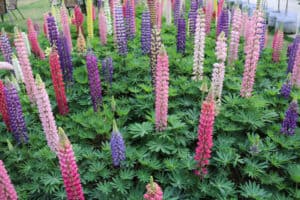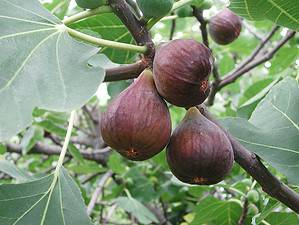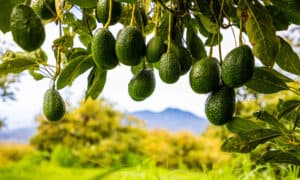Poison ivy and poison sumac both contain compounds that cause rashes and itchy bumps. However, while they may have similar behaviors, one is a little more dangerous than the other. To learn the differences between poison sumac and poison ivy and why one is more of a threat, continue reading below.
About Poison Sumac
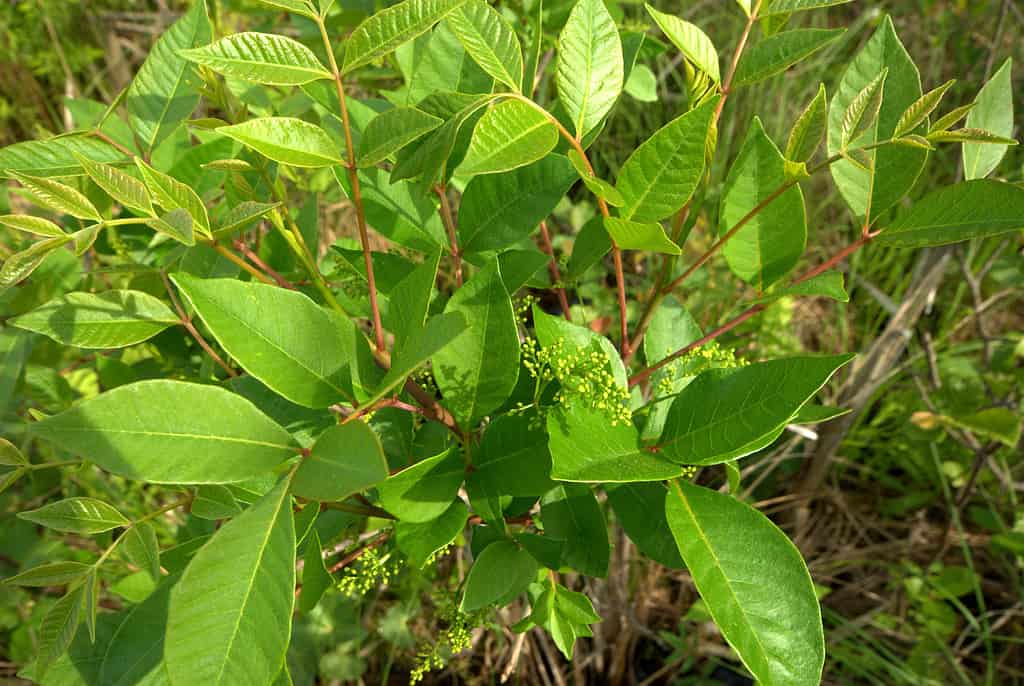
Poison sumac isn’t as easy to identify as poison ivy and poison oak.
©Joshua Mayer / CC BY-SA 2.0 – License
Poison sumac usually grows as a large shrub or a tree. It’s fairly rare, only growing in swampy and acidic habitats throughout North America.
Leaves of three, let it be. Berries white, take flight
Common poem to help people identify dangerous poison ivy
While poison ivy is fairly identifiable, even having a poem to help people remember not to touch it, sumac is a little harder to identify. Instead of three leaves growing in a cluster, it consists of somewhere between 7 and 13 oval leaflets. Here is a very helpful video from the YouTube channel Eat The Planet that thoroughly walks you through the identification process:
About Poison Ivy
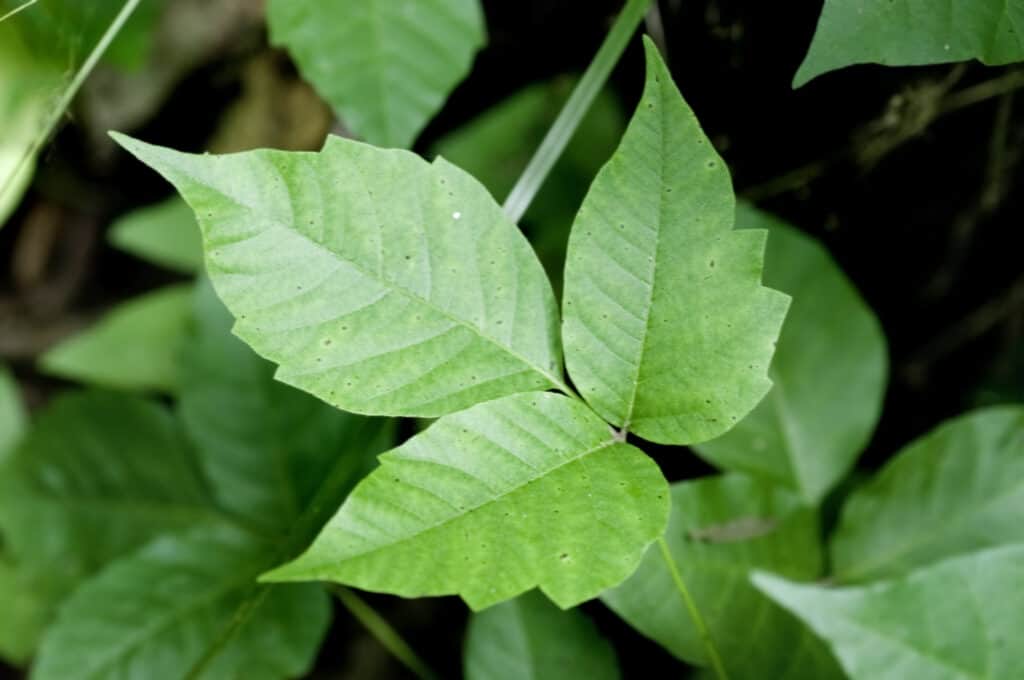
Poison ivy is easily identifiable thanks to its trio of leaves.
©Tim Mainiero/Shutterstock.com
Poison ivy is the most common of the three similar poisonous plants. The plant grows as a small shrub or vine and consists of leaves that grow in a cluster of three, which all have jagged edges. Generally, the middle leaflet has a longer stem than the other two.
This one is a very common plant that all states have except for California, Alaska, and Hawaii.
The Third Contender: Poison Oak
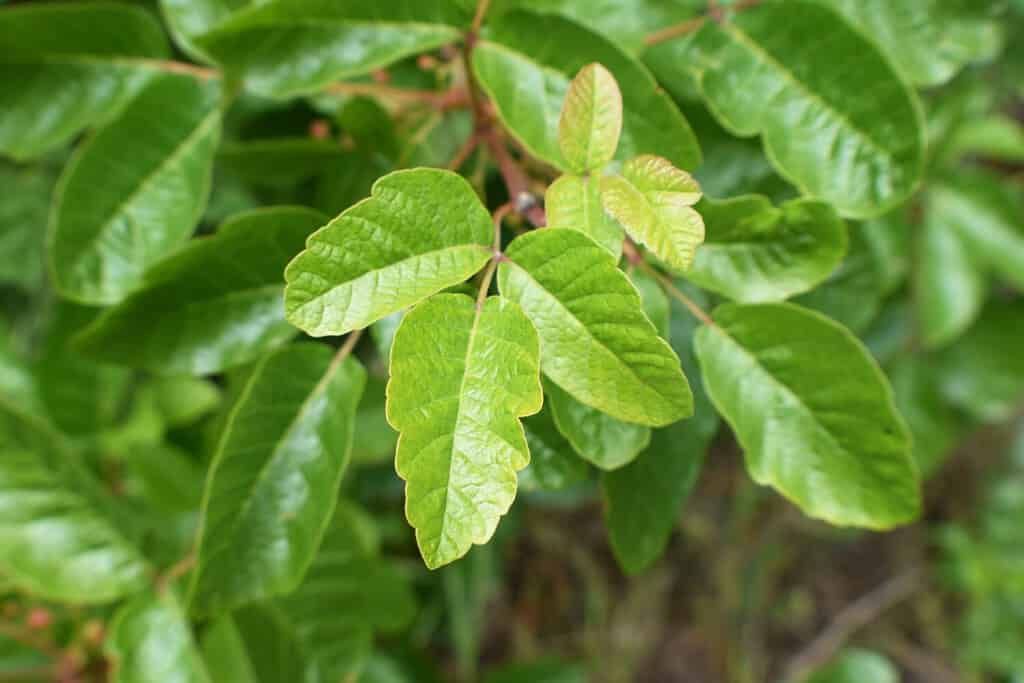
Poison oak leaves also grow in threes, though they look a little different compared to poison ivy.
©ShutterstockProfessional/Shutterstock.com
A cousin to the other two is poison oak. It’s the second most common out of the three, found along the West Coast and in the Southeast. It has a similar shape to poison ivy, with leaflets growing in groups of three and jagged leaf edges. It also grows in the form of a small shrub or vines.
Which One Is More Dangerous to the Touch?
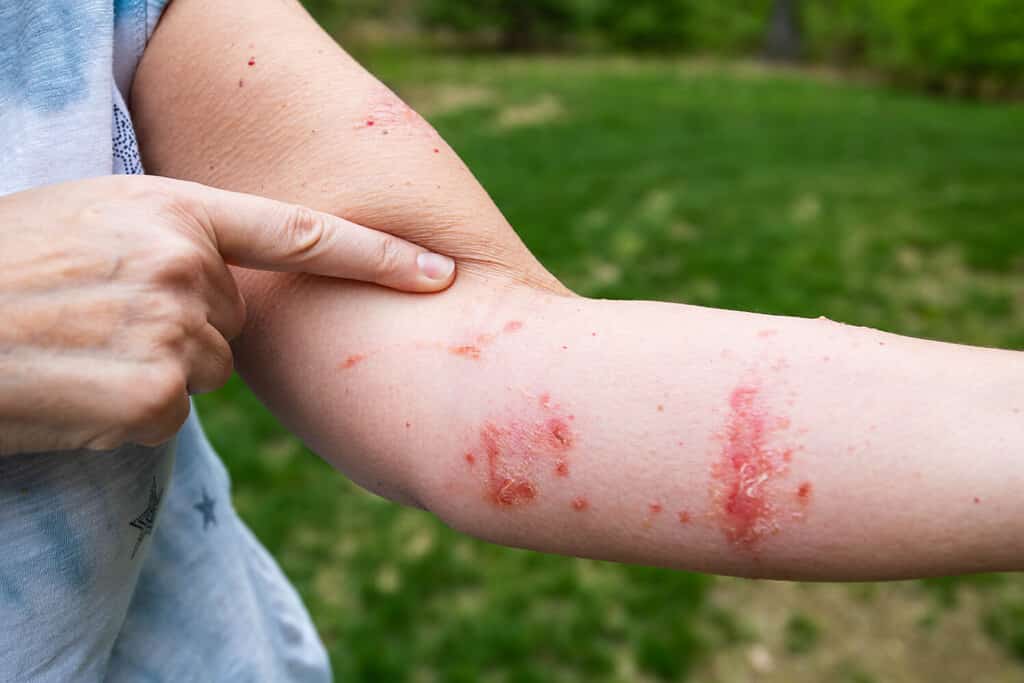
This is what urushiol allergic reactions look like in most of the population.
©Michael Moloney/Shutterstock.com
All three are fairly dangerous, as they all produce urushiol oil. This is an oil that even the smallest drop can cause an allergic reaction leading to little red, itchy bumps. Roughly 85 percent of the population is allergic to urushiol.
Because all three plants have the same compound, the results of touching one will all be the same. If you’re allergic to one, you’re allergic to all three. However, there is one that’s a bit more dangerous than the other two.
Without a doubt, the most dangerous of the three to touch is poison sumac. While they all contain the same poisonous compound, poison sumac has a serious disadvantage.
Both poison oak and poison ivy grow either as a bush or as a vine. While they can grow up on taller plants, they’re usually thin with few leaves you can brush up against. It’s common to get the rash on your arms or legs, but that’s about it.
On the other hand, poison sumac grows in big leaf clusters that stand out. It also grows as a tree. Instead of depending on other plants in the area or staying as a small bush, poison sumac can grow up to 20 feet tall.
It also doesn’t look like the other two plants, and many people don’t know to be wary of this toxic plant. They end up brushing against it or pushing through the branches without realizing the danger. This has led to quite a few cases of people getting rashes on their face, chest, and back.
The photo featured at the top of this post is ©
Thank you for reading! Have some feedback for us? Contact the AZ Animals editorial team.




